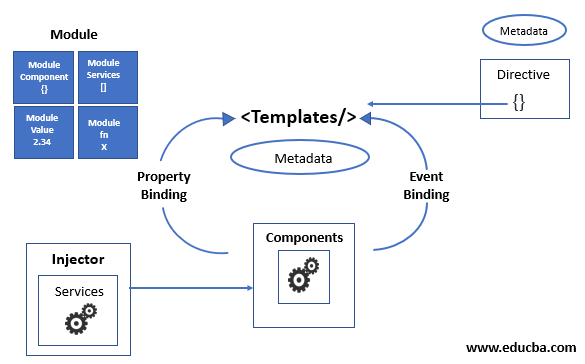Angular Application Work

An Angular application works by leveraging the Angular framework to create dynamic, single-page web applications (SPAs). Here's an overview of how an Angular application typically works:
Initialization: When a user loads an Angular application in their web browser, the Angular runtime initializes and bootstraps the application. This process involves bootstrapping the root Angular module, which serves as the entry point for the application.
Module Loading: Angular applications are organized into modules, which encapsulate different parts of the application's functionality. During initialization, Angular loads the required modules and sets up the dependency injection system.
Component Rendering: Angular applications are built using components, which are self-contained units that encapsulate the application's UI and logic. Angular components have templates that define the structure of the UI and TypeScript code that defines the component's behavior.
Data Binding: Angular's data binding system binds the component's data (model) to the UI (view) and vice versa. Changes to the data in the component are automatically reflected in the UI, and user interactions with the UI can trigger changes in the component's data.
Routing and Navigation: Angular's router module enables client-side routing and navigation within the application. Developers can define routes and associate them with components, allowing users to navigate between different views or pages without a full page reload.
HTTP Requests: Angular applications often need to communicate with backend servers to fetch or send data. Angular provides the HttpClient module, which simplifies making HTTP requests and handling responses in the application.
Event Handling: Angular applications respond to user interactions and events using event binding and event handling mechanisms. Developers can bind DOM events (such as click, submit, etc.) to methods in the component class, allowing for user interaction and triggering application logic.
Forms Handling: Angular provides robust support for building forms, both template-driven forms and reactive forms. Developers can create forms with validation, error handling, and dynamic form controls, allowing users to input data and interact with the application.
Dependency Injection: Angular's dependency injection system allows components and services to be loosely coupled and easily testable. Dependencies are provided to components and services through constructor injection, enabling better code organization and modularity.
Testing: Angular applications can be tested using a variety of testing tools and techniques. Angular provides support for writing unit tests, integration tests, and end-to-end tests using frameworks like Jasmine, Karma, and Protractor.
Overall, Angular applications work by leveraging the features and capabilities provided by the Angular framework to create dynamic, interactive, and maintainable web applications. The framework provides tools and patterns for organizing code, managing state, handling user interactions, and communicating with backend servers, allowing developers to build robust and scalable applications.
Thank you,